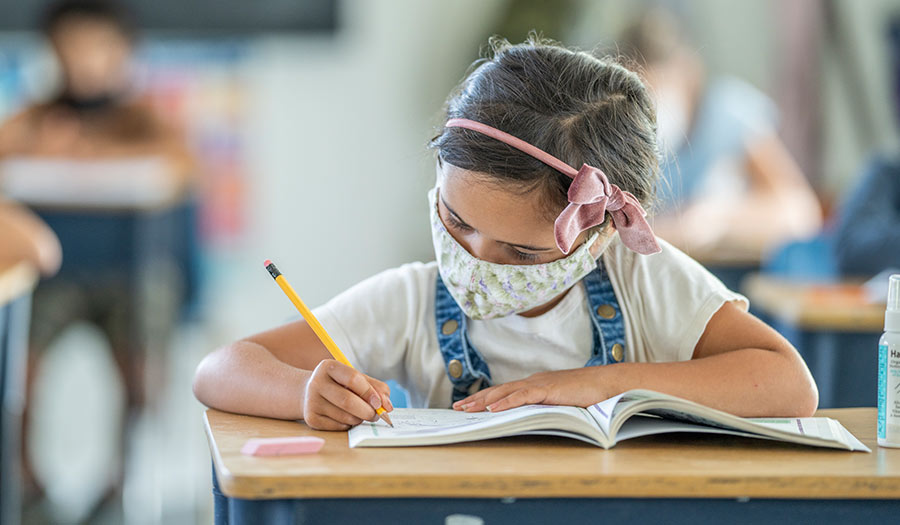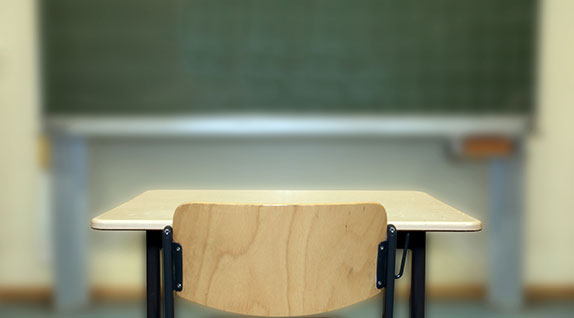 Getty Images
Getty Images
Article
Learn the why behind the headlines.
Subscribe to the Real Truth for FREE news and analysis.
Subscribe NowThe COVID-19 pandemic led to historic learning setbacks for America’s children, sparing no state or region as it erased decades of academic progress and widened racial disparities, according to results of a national test that provide the sharpest look yet at the scale of the crisis.
Across the country, math scores saw their largest decreases ever. Reading scores dropped to 1992 levels. Nearly 4 in 10 eighth graders failed to grasp basic math concepts. Not a single state saw a notable improvement in their average test scores, with some simply treading water at best.
Those findings from the National Assessment of Educational Progress—known as the “nation’s report card”—tested hundreds of thousands of fourth and eighth graders across the country this year. It was the first time the test had been given since 2019, and it is seen as the first nationally representative study of the pandemic’s impact on learning.
“It is a serious wakeup call for us all,” Peggy Carr, commissioner of the National Center for Education Statistics, a branch of the Education Department, said in an interview. “In NAEP, when we experience a 1- or 2-point decline, we’re talking about it as a significant impact on a student’s achievement. In math, we experienced an 8-point decline—historic for this assessment.”
Researchers usually consider a 10-point gain or drop equivalent to roughly a year of learning.
It is no surprise that children are behind. The pandemic upended everyday life and left millions learning from home for months or more. The results reveal the depth of those setbacks and the size of the challenges schools face as they help students catch up.
Education Secretary Miguel Cardona said it is a sign that schools need to redouble their efforts, using billions of dollars that Congress gave schools to help students recover.
“Let me be very clear: These results are not acceptable,” Mr. Cardona said.
The NAEP test is typically given every two years. It was taken between January and March by a sample of students in every state, and 26 of the nation’s largest school districts. Scores had been stalling even before the pandemic, but the new results show decreases on a scale not seen before.
In both math and reading, students scored lower than those tested in 2019. But while reading scores dipped, math scores plummeted by the largest margins in the history of the NAEP program, which began in 1969.
Math scores were worst among eighth graders, with 38 percent earning scores deemed “below basic”—a cutoff that measures, for example, whether students can find the third angle of a triangle if they are given the other two. That is worse than 2019, when 31 percent of eighth graders scored below that level.
No part of the country was exempt. Every region saw test scores slide, and every state saw declines in at least one subject.
Several major districts saw test scores fall by more than 10 points. Cleveland saw the largest single drop, falling 16 points in fourth-grade reading, and a 15-point decline in fourth-grade math. Baltimore and Tennessee’s Shelby County also saw precipitous declines.
“This is more confirmation that the pandemic hit us really hard,” said Eric Gordon, chief executive for the Cleveland Metropolitan School District. To help students recover, the school system has beefed up summer school and added after-school tutoring.
“I’m not concerned that they can’t or won’t recover,” Mr. Gordon said. “I’m concerned that the country won’t stay focused on getting kids caught up.”
The results show a reversal of progress on math scores, which had made big gains since the 1990s. Reading, by contrast, had changed little in recent decades, so even this year’s relatively small decreases put the averages back to where they were in 1992.
Also concerning are the gaps between students.
Confirming what many had feared, racial inequities appear to have widened. In fourth grade, black and Hispanic students saw bigger decreases than white students, widening gaps that have persisted for decades.
Inequities were also reflected in a growing gap between higher and lower performing students. In math and reading, scores fell most sharply among the lowest performing students, creating a widening chasm between struggling students and the rest of their peers.
Surveys done as part of this year’s test illustrate the divide. When schools shifted to remote learning, higher performing students were far more likely to have reliable access to quiet spaces, computers and help from their teachers, the survey found.
The results make clear that schools must address the “long-standing and systemic shortcomings of our education system,” said Alberto Carvalho, superintendent of Los Angeles schools and a member of the National Assessment Governing Board, which sets the policies for the test.
Many parents may not understand just how far behind their children are academically. A spring survey by the national nonprofit Learning Heroes found the majority of parents believed their children were performing at or above their grade level in math and reading.
“There’s a myth that parents just don’t want to know. That the country just wants to get back to normal,” said Sonja Santelises, chief executive officer of Baltimore City Public Schools. “But parents are very concerned.”
Some parents blame schools for not clearly communicating learning gaps. In Nashville, a parent advocacy group is pushing the school system to share clearer information about student progress—and to create personal plans to help students catch up.
“Every student has the right to be taught to read, but we failed at that,” said Sonya Thomas, a mother who is the executive director of Nashville PROPEL. “That’s creating social emotional problems. That’s creating workforce problems. That’s creating life and death problems.”
Other recent studies have found that students who spent longer periods learning online suffered greater setbacks. But the NAEP results show no clear connection. Areas that returned to the classroom quickly still saw significant declines, and cities—which were more likely to stay remote longer—actually saw milder decreases than suburban districts.
Los Angeles can claim one of few bright spots. The nation’s second-largest school district saw eighth-grade reading scores increase by 9 points, the only significant uptick in any district. For other districts, it was a feat just to hold even, as achieved by Dallas and Florida’s Hillsborough County.
Testing critics caution against putting too much stock in standardized exams, but there is no doubt that the skills it aims to measure are critical. Students who take longer to master reading are more likely to drop out and end up in the criminal justice system, research has found, and eighth grade is seen as a pivotal time to develop skills for math and science careers.
For Ms. Carr, the results raise new questions about what will happen to students who appear to be far behind in attaining those skills.
“We want our students to be prepared globally for STEM careers, science and technology and engineering,” she said. “This puts all of that at risk. We have to do a reset. This is a very serious issue, and it’s not going to go away on its own.”
This report contains information from The Associated Press.
- Real Truth Magazine Articles
- EDUCATION
 What’s Missing from the Classroom?
What’s Missing from the Classroom?
More on Related Topics:
- U.S. Children Fall Further Behind in Reading, Make Little Improvement in Math on National Exam
- Schools Are Cutting Bus Service for Children. Parents Are Turning to Ride-hailing Apps
- Is College Worth It?
- Taliban Have Deliberately Deprived 1.4 Million Afghan Girls of Schooling Through Bans, Says UNESCO
- Schools Have Made Slow Progress on Record Absenteeism, with Millions of Kids Still Skipping Class


